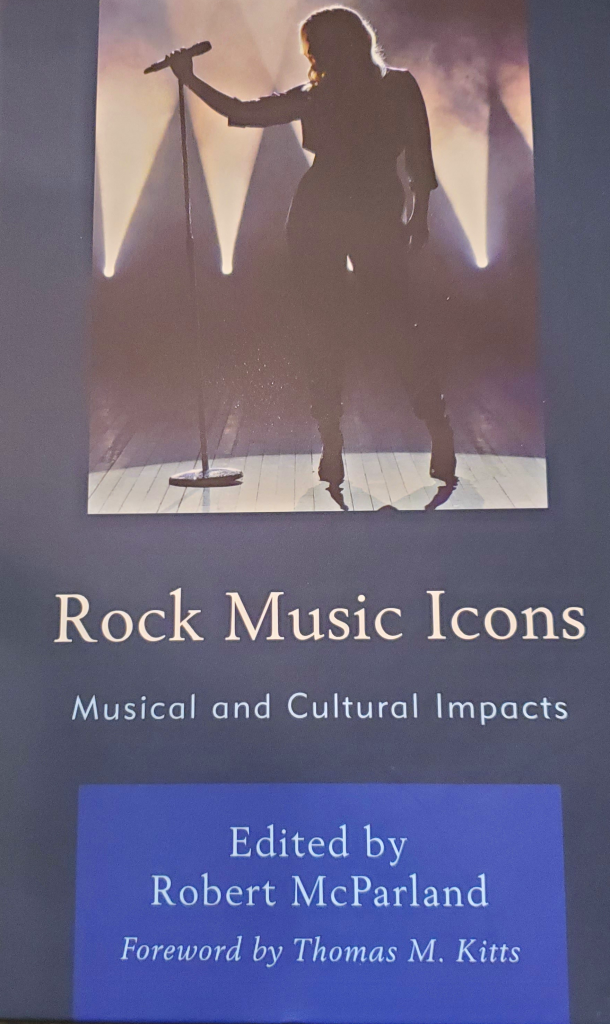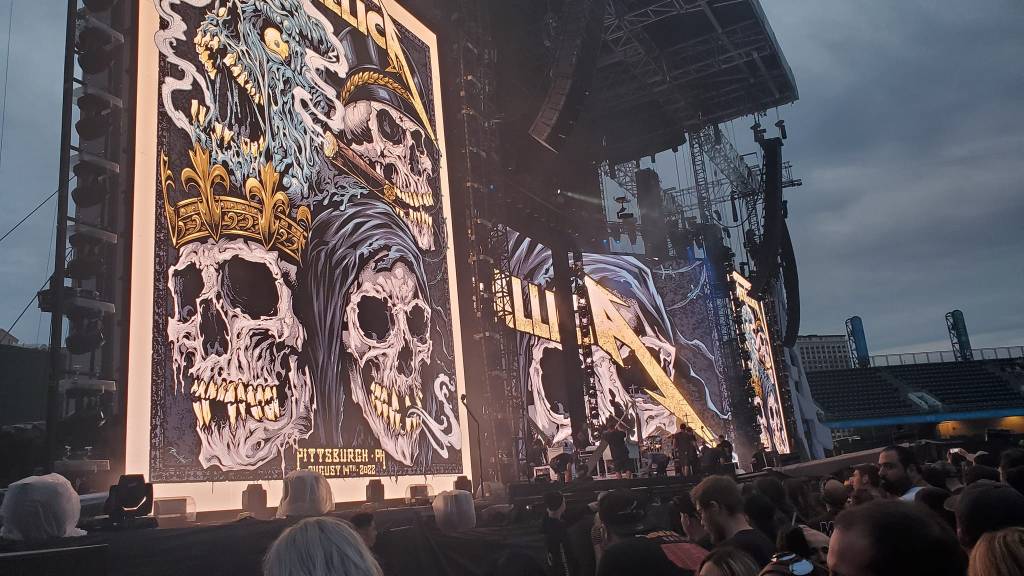This week has been very important in my career, as I finally received a copy of the book I contributed to called Rock Music Icons: Musical and Cultural Impacts. This has been something that has been three years in the making, full of immersing myself into one of my favorite bands, Metallica. This blog will share with you how this came to be and how you can get a copy soon.
This piece started in 2019 when I began my Ph.D. journey at IUP. In my first course, Ideas that Shape the Media, we had the opportunity to write (based on foundational communication theory) about a topic of our choosing. I had always been interested in the notion of Metallica “selling out” on The Black Album, how classic Metallica fans felt betrayed by the band’s new sound. Inversely, millions of people rocked to “Enter Sandman” and “Sad But True.” To me, I could not wrap my head around how one group could hate and another could love the band. That question led me to develop this paper, “Macdonald’s Theory of Mass Culture: Metallica’s Shift from Avantgardism to Mass Culture on The Black Album.”
The problem with my initial paper was that I simply had not written anything of this magnitude since I was in graduate school at Shippensburg back in the late 2000s. While I got fantastic feedback from my professor, it did not seem that publishing it would be an option without a significant re-write. At a minimum, though, I wanted to present my findings.
A major component of a Ph.D. program is publishing your work and presenting it at conferences. Even though publishing did not seem like an option at the time, I applied and was accepted to my first-ever academic conference, as I presented at the Popular Culture Association (PCA) National Conference in April 2020. Even though my plans of going to Boston to present fell by the wayside, I still had the opportunity to share my knowledge with a group of about 30 of my peers. My panel, “Rock Icons,” was coordinated by Dr. Robert McParland, a professor of English and humanities in New Jersey. My presentation must have made a quality impression on him because he approached me later in 2020 about being a contributor to a book he was editing, which of course, I accepted.
At this point, I was floored that I actually had the opportunity to write something that was going to be published, but I knew that my paper, as originally written, was not up to par. In addition, we were in the middle of a life-changing pandemic and I was still in school, so I did not know how I was going to make this work.
At Central Penn College, one of my dearest colleagues, Dr. Thomas Davis, had been a part of the paper from the very beginning, reading it and giving feedback during the early stages. But Dr. Davis had something I did not have, vast knowledge of playing music, especially hard rock. While I felt comfortable speaking about the cultural significance of the band, I felt that I was missing a major piece of the discussion, how Metallica’s music actually changed over time. In previous conversations, we had always discussed working on a project together, and this seemed to me to be the one. So, I asked him to join me in this endeavor, and he accepted.

That began a nearly year-long effort of writing (the easy part) and editing (the hard part). We decided to take a bit different direction than my original paper because our task was to talk about Metallica being rock music icons, not specifically this “selling out” debate that I had tackled in my original effort. So, we started at square one, outlining how we would spend the next year on this effort. We worked unbelievably well together, first outlining the piece, then delegating which areas we would approach.
The next part was research. I have read and viewed almost every interview from Metallica during the 90s and early 2000s. I have read entire books about the band and their evolution over the years. I know more about them than I ever thought I would, and I have a new respect for their contributions to popular culture. As the paper grew and grew, we knew that we might have a small problem.
The biggest issue that we had was the length. At one point, our draft was over 10,000 words (approximately 36.5 pages) when we were allotted 6,500 – 7,500 words. It took us a combination of massive edits to get the paper down to where it needed to be, even submitting a final draft that was nearly 1,000 words over the limit, hoping our editor would provide us additional guidance. We submitted our final piece, “Obey Your Masters: Metallica’s Journey to Icon Status,” on Jan. 15, 2022.
There were very few edits that were suggested to us by our editor, which was a welcome relief to two full-time professors and part-time Ph.D. students. In fact, other than a few procedural aspects, the copy was published as is. Still, there was doubt. I was afraid we might get cut out of the book entirely or that major sections might not make it into the final cut. I checked my email incessantly, wondering if I would receive a message from the editor about issues that came up with the publishing of the book. But those emails never came.
Fast forward to July 2022. Our editor emailed me and told me that not only was the book going to print, but that we were the final chapter, something he said was somewhat of an honor. Reading these words provided some of the greatest validation in my entire life. Something I had worked on for nearly three years and had multiple iterations of had finally come to fruition. This book is the first time that Dr. Davis and I have seen our names in print as authors. And the feeling is one I cannot describe.
With this being said, Dr. Davis and I still had never actually seen Metallica live, something that we knew we needed to rectify. And, on Aug. 14, we changed that, making the trek to Pittsburgh’s PNC Park for the concert of a lifetime. This was the culmination of all of our hard work, and seeing the crowd of around 40,000 people showed us the impact this band still has, even with only releasing one album since 2008. They are icons.

In the end, I want to share this book with you! If you would like a copy (the list price is $100, but I can get one for around $50), please let me know at your earliest convenience. I will purchase a bulk order, but I will only have limited copies. I will have a gathering in early October to celebrate this accomplishment and distribute these books to all of you. I really look forward to sharing this amazing accomplishment with all of my friends and colleagues who continue to support me in this journey!
